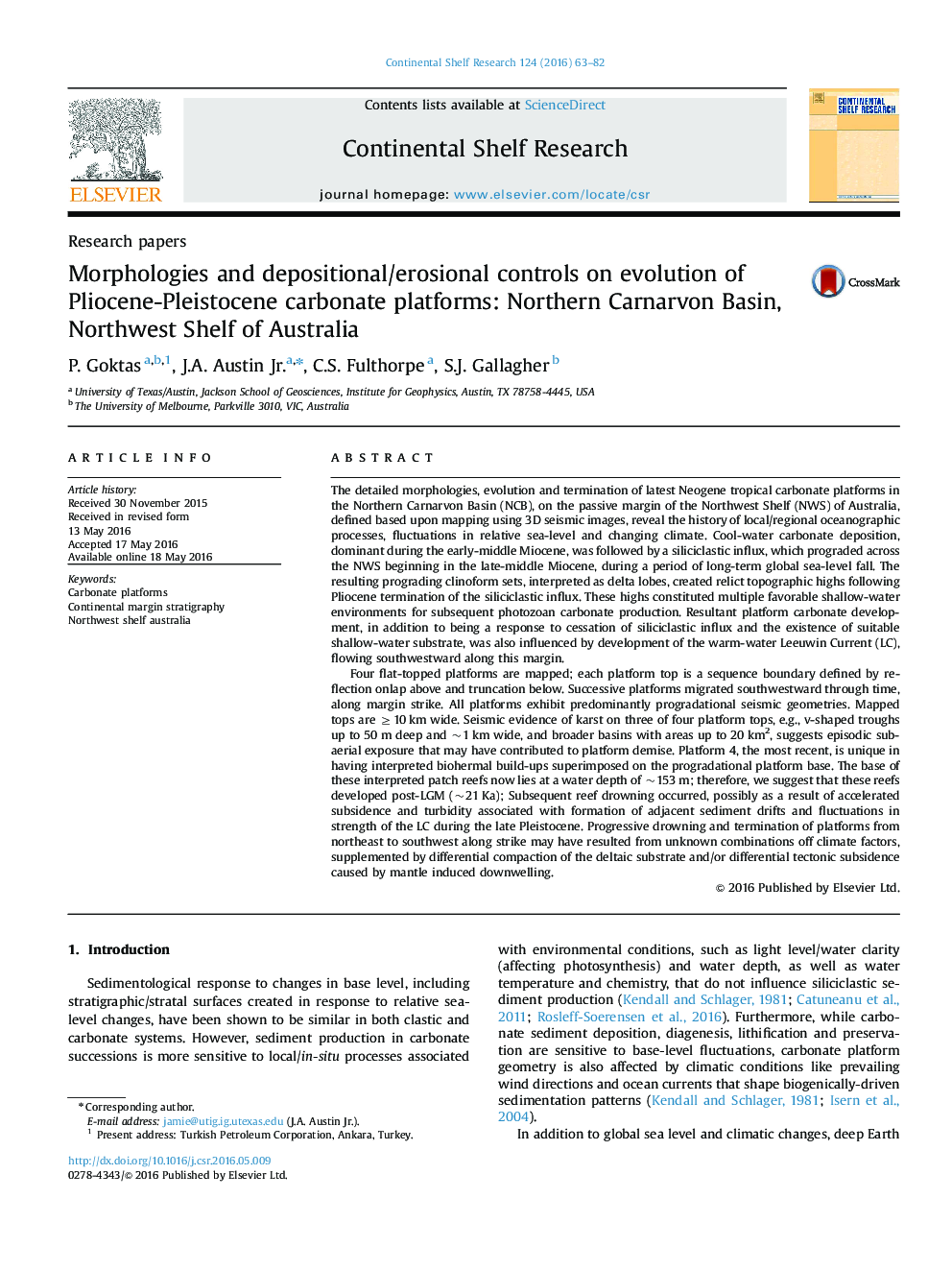| Article ID | Journal | Published Year | Pages | File Type |
|---|---|---|---|---|
| 6382897 | Continental Shelf Research | 2016 | 20 Pages |
Abstract
Four flat-topped platforms are mapped; each platform top is a sequence boundary defined by reflection onlap above and truncation below. Successive platforms migrated southwestward through time, along margin strike. All platforms exhibit predominantly progradational seismic geometries. Mapped tops are â¥10 km wide. Seismic evidence of karst on three of four platform tops, e.g., v-shaped troughs up to 50 m deep and ~1 km wide, and broader basins with areas up to 20 km2, suggests episodic subaerial exposure that may have contributed to platform demise. Platform 4, the most recent, is unique in having interpreted biohermal build-ups superimposed on the progradational platform base. The base of these interpreted patch reefs now lies at a water depth of ~153 m; therefore, we suggest that these reefs developed post-LGM (~21 Ka); Subsequent reef drowning occurred, possibly as a result of accelerated subsidence and turbidity associated with formation of adjacent sediment drifts and fluctuations in strength of the LC during the late Pleistocene. Progressive drowning and termination of platforms from northeast to southwest along strike may have resulted from unknown combinations off climate factors, supplemented by differential compaction of the deltaic substrate and/or differential tectonic subsidence caused by mantle induced downwelling.
Keywords
Related Topics
Physical Sciences and Engineering
Earth and Planetary Sciences
Geology
Authors
P. Goktas, J.A. Jr., C.S. Fulthorpe, S.J. Gallagher,
